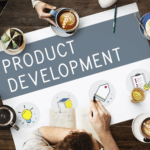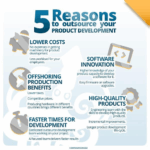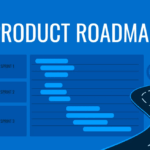Ever wondered why some businesses run like clockwork while others trip over supplier delays? Effective vendor management can be the difference between success and failure. This guide will explore the ins and outs of vendor management, offering valuable insights and practical strategies.
The Backbone of Business Operations
Vendors play a pivotal role in the supply chain, providing essential goods and services. According to a 2023 Deloitte survey, 71% of procurement professionals believe that technology plays a vital role in improving vendor relationships. This statistic underscores the importance of effective vendor management.
What Is Vendor Management?
Vendor management involves overseeing and coordinating relationships with suppliers. It ensures that goods and services are delivered efficiently and cost-effectively. Unlike procurement, which focuses on acquiring goods, vendor management emphasizes nurturing long-term relationships.
The Importance of Vendor Management in Procurement
Effective vendor management in procurement is vital for several reasons:
Cost Control
How much money could you save with smarter vendor management? Managing vendors strategically can make your procurement budget go further.
According to The Hackett Group (2023), 40% of procurement leaders saw rising sourcing costs in the past year. Through negotiation, bulk discounts, and competitive bidding, vendor management keeps these costs in check.
When you know your vendor landscape, you avoid overpaying and plug leaks in the budget.
As the saying goes, “A penny saved is a penny earned.”
Risk Mitigation
Vendor issues can snowball into full-blown disasters—think late deliveries or compliance violations. The Institute of Internal Auditors (2023) reports that 62% of companies face substantial vendor-related risks.
Effective vendor management identifies red flags early. From geopolitical issues to financial instability, managing vendor risk shields you from costly surprises.
Quality Assurance
Vendors affect your product’s quality. Poor inputs mean poor outputs—simple as that. Vendor management includes regular audits and performance reviews to uphold standards.
Strong vendor relationships foster accountability, ensuring consistent quality and fewer customer complaints. As they say, “What you sow is what you reap.”
Innovation Through Collaboration
Two heads are better than one. Vendor relationships are not just transactional—they can be transformational. Many suppliers today co-develop solutions or introduce innovative products before the competition sees them.
When vendors are treated like partners, they bring fresh ideas to the table. Vendor collaboration led to a 21% innovation increase in firms with strategic supplier partnerships (McKinsey, 2023).
Supplier Vendor Management: Building Long-Term Value
Vendor Selection
What’s more expensive—choosing a quality vendor or fixing a bad vendor decision? Choosing the right vendor is like choosing the right teammate. Vendor selection involves background checks, reference reviews, and capability assessments.
The right match goes beyond cost—it’s about reliability, scalability, and shared values.
Getting this wrong costs more than just money—it hits reputation and workflow.
Contract Negotiation
Clear contracts prevent cloudy expectations. A good contract outlines scope, timelines, responsibilities, payment terms, and exit clauses. It protects both sides while ensuring clarity.
Harvard Business Review (2023) highlighted that 50% of disputes with vendors arise from vague agreements. Better safe than sorry, right?
Performance Monitoring
You can’t improve what you don’t measure. Vendor scorecards assess delivery time, product quality, issue resolution, and responsiveness. Quarterly reviews foster open communication and continuous improvement. Suppliers who know they’re being watched tend to stay on their toes.
Trust, but verify.
Risk Management
Don’t wait for the storm; prepare the roof in the sunshine. Supply chains today face geopolitical tensions, cyberattacks, and climate disruptions.
A 2024 Riskmethods survey revealed that 84% of firms experienced third-party disruption in the past year. Vendor risk management means backup plans, insurance clauses, and diversified sourcing.
When things go wrong, you need a Plan B—or even a Plan C.
Relationship Building
Your supplier isn’t just a business contact—they’re your operational ally. Treat them how you’d like to be treated—it pays dividends. Regular calls, feedback, and transparency build mutual respect and loyalty.
Strong relationships can yield better service, priority treatment, and inside-market knowledge.
Happy vendors often mean happy customers.
What Is Vendor Management Process?
The vendor management process isn’t a one-time task. It’s a cycle that ensures consistency and growth.
Step 1: Needs Assessment
- Start with the end in mind.
- Define what you need, when, and why.
- Don’t shop without a list—clarity saves time and money.
Step 2: Vendor Identification
- Cast a wide net, but filter wisely.
- Look at vendor directories, referrals, and trade shows.
- Your ideal vendor is out there—you just need to find them.
Step 3: Request for Proposal (RFP)
- Send detailed RFPs that outline scope, expectations, and timelines.
- This weeds out unqualified vendors early.
- The clearer your RFP, the smoother your procurement.
Step 4: Evaluation and Selection
- Compare apples to apples.
- Score vendors based on predefined metrics.
- Involve cross-functional teams to ensure fairness.
Step 5: Contract Finalization
- Review with legal teams and cover all your bases.
- Add performance benchmarks and penalty clauses.
- Get it in writing—every time.
Step 6: Onboarding
- Introduce systems, train vendor reps, and align expectations.
- A rocky start often means recurring problems.
- Start strong, stay strong.
Step 7: Performance Monitoring
- Track KPIs, respond to issues fast, and meet regularly.
- Use software like SAP Ariba or Coupa for automated updates.
- Knowledge is power—especially when it’s real-time.
Step 8: Feedback and Improvement
- Vendors want feedback, just like employees do.
- Appreciate good work, correct missteps early.
- This feedback loop drives long-term success.
Supply Chain Vendor Management: Keeping the Wheels Turning
Build backups before you need them. When a vendor fails, how many other parts of your supply chain stumble? According to Gartner (2023), 79% of supply chain leaders prioritize multi-vendor models for resilience.
It’s not just about saving money—it’s about saving your brand during disruptions. Supply chain vendor management links procurement, logistics, and inventory.
A single weak vendor can bottleneck your entire workflow.
Best Practices: The Cream of the Crop
- Communicate Clearly: No assumptions. Use email, dashboards, and meetings to keep everyone on the same page.
- Use Tech Wisely: Invest in tools that track vendors in real time and predict disruptions.
- Involve Stakeholders: From finance to operations, everyone should have a seat at the vendor table.
- Diversify Sourcing: Don’t rely on one region, one vendor, or one plan.
- Train Internally: Teach your teams how to spot and manage vendor issues.
Final Thoughts: Partner With the Best in the Game
When it comes to vendor management, success lies in consistency, transparency, and preparation.
You need to treat vendor relationships like strategic assets, not one-time transactions.
Looking for the best sourcing company to help you streamline your vendor management?
Brand New MD is your go-to solution.
We offer expert sourcing support, strategic vendor insights, and seamless procurement processes.
Don’t leave your vendor management to chance—partner with professionals who walk the talk.
Also, check out these top picks from BNMD, specially curated to enhance your knowledge.









